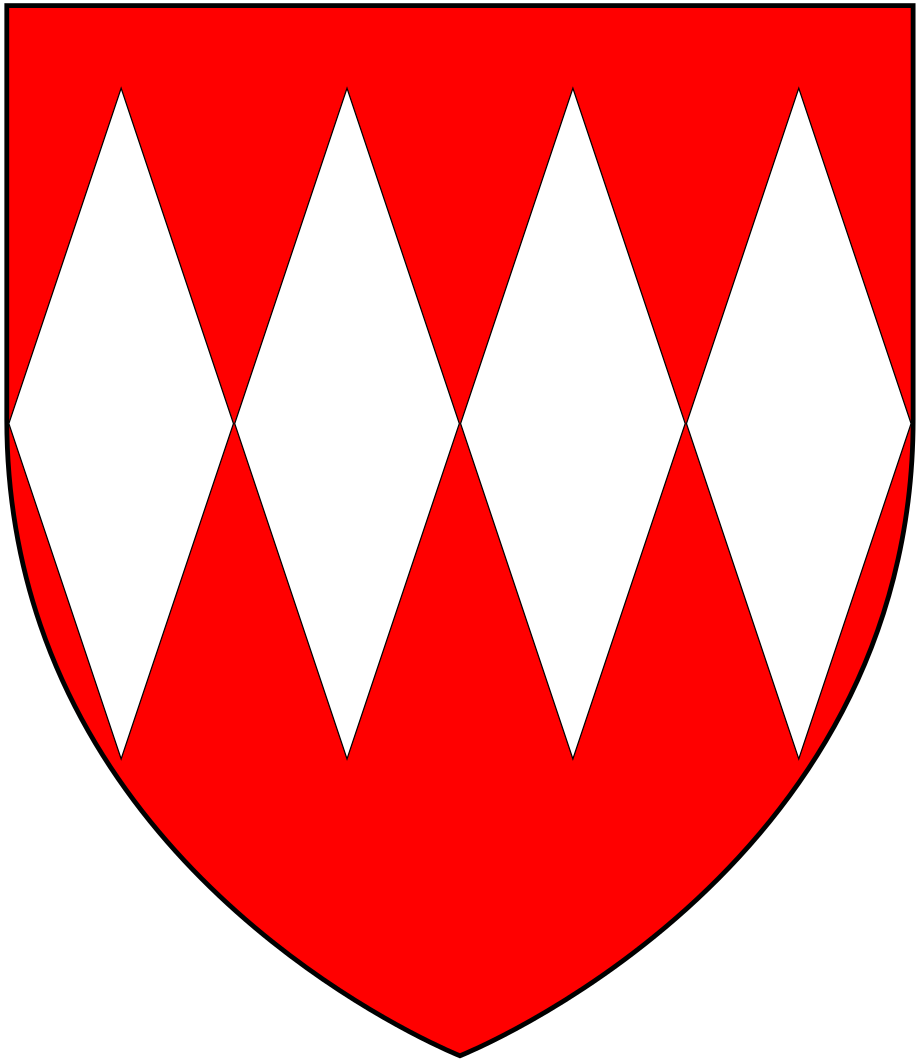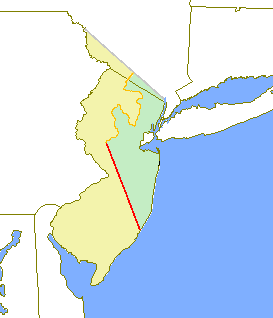|
Concession And Agreement
Concession and Agreement (full title: ''The Concession and Agreement of the Lords Proprietors of the Province of New Caesarea, or New Jersey, to and With All and Every the Adventurers and All Such as Shall Settle or Plant There'') was a 1664 document that provided religious freedom in the colony of New Jersey. It was issued as a proclamation for the structure of the government for the colony written in 1664 by the two proprietors, Lord John Berkeley and Sir George Carteret. The document promised religious freedom to all inhabitants of New Jersey, and also declared that the proprietors would be in charge of appointing the provincial governors. The first such governor to be appointed was Philip Carteret. The goal of the document was to entice more settlers to farm in New Jersey, so that the two proprietors could earn more profit by collecting quit-rents, annual fees paid on granted lands. To encourage such settlement, they allowed religious freedom, which was not available undernea ... [...More Info...] [...Related Items...] OR: [Wikipedia] [Google] [Baidu] |
Religious Freedom
Freedom of religion or religious liberty is a principle that supports the freedom of an individual or community, in public or private, to manifest religion or belief in teaching, practice, worship, and observance. It also includes the freedom to change one's religion or beliefs, "the right not to profess any religion or belief", or "not to practise a religion". Freedom of religion is considered by many people and most nations to be a fundamental human right. In a country with a state religion, freedom of religion is generally considered to mean that the government permits religious practices of other sects besides the state religion, and does not persecute believers in other faiths (or those who have no faith). Freedom of belief is different. It allows the right to believe what a person, group, or religion wishes, but it does not necessarily allow the right to practice the religion or belief openly and outwardly in a public manner, a central facet of religious freedom. Freed ... [...More Info...] [...Related Items...] OR: [Wikipedia] [Google] [Baidu] |
Province Of New Jersey
The Province of New Jersey was one of the Middle Colonies of Colonial America and became the U.S. state of New Jersey in 1783. The province had originally been settled by Europeans as part of New Netherland but came under English rule after the surrender of Fort Amsterdam in 1664, becoming a proprietary colony. The English renamed the province after the island of Jersey in the English Channel. The Dutch Republic reasserted control for a brief period in 1673–1674. After that it consisted of two political divisions, East Jersey and West Jersey, until they were united as a royal colony in 1702. The original boundaries of the province were slightly larger than the current state, extending into a part of the present state of New York, until the border was finalized in 1773. Background The Province of New Jersey was originally settled in the 1610s as part of the colony of New Netherland. The surrender of Fort Amsterdam in September 1664 gave control over the entire Mid-Atlantic ... [...More Info...] [...Related Items...] OR: [Wikipedia] [Google] [Baidu] |
John Berkeley, 1st Baron Berkeley Of Stratton
John Berkeley, 1st Baron Berkeley of Stratton (1602 – 26 August 1678) was an English royalist soldier, politician and diplomat, of the Bruton branch of the Berkeley family. From 1648 he was closely associated with James, Duke of York, and rose to prominence, fortune, and fame. He and Sir George Carteret were the founders of the Province of New Jersey, a British colony in North America that would eventually become the U.S. state of New Jersey. Early life Berkeley was the second son of Sir Maurice Berkeley (died 1617) and his wife Elizabeth Killigrew, daughter of Sir William Killigrew (Chamberlain of the Exchequer) of Hanworth. His elder brother was Charles Berkeley, 2nd Viscount Fitzhardinge; his younger brother, Sir William Berkeley, served as royal governor of the colony of Virginia from 1642 to 1652 and again from 1660 to 1677. John Berkeley was accredited ambassador from Charles I of England to Christina of Sweden, in January 1637, to propose a joint effort by the two ... [...More Info...] [...Related Items...] OR: [Wikipedia] [Google] [Baidu] |
George Carteret
Vice Admiral Sir George Carteret, 1st Baronet ( – 14 January 1680 N.S.) was a royalist statesman in Jersey and England, who served in the Clarendon Ministry as Treasurer of the Navy. He was also one of the original lords proprietor of the former British colony of Carolina and New Jersey. Carteret, New Jersey, as well as Carteret County, North Carolina, both in the United States, are named after him. He acquired the manor of Haynes, Bedfordshire, (''alias'' Hawnes) in about 1667. Early life Carteret was the son of Elias de Carteret and Elizabeth Dumaresq of Jersey, who both died in 1640. Elias was the son of Philippe de Carteret I, 2nd Seigneur of Sark. With the help of his Uncle Philippe de Carteret II, 3rd Seigneur of Sark George was able to gain a position in the Royal Navy (George dropped the "de" from his surname when he entered the English navy, concerned that it sounded too French). George was "bred for the sea" and served as an officer in various naval ships, bei ... [...More Info...] [...Related Items...] OR: [Wikipedia] [Google] [Baidu] |
List Of Colonial Governors Of New Jersey
The territory which would later become the state of New Jersey was settled by Dutch and Swedish colonists in the early seventeenth century. In 1664, at the onset of the Second Anglo-Dutch War, English forces under Richard Nicolls ousted the Dutch from control of New Netherland (present-day New York, New Jersey, and Delaware), and the territory was divided into several newly defined English colonies. Despite one brief year when the Dutch retook the colony (1673–74), New Jersey would remain an English possession until the American colonies declared independence in 1776. In 1664, James, Duke of York (later King James II) divided New Jersey, granting a portion to two men, Sir George Carteret and John Berkeley, 1st Baron Berkeley of Stratton, who supported the monarchy's cause during the English Civil War (1642–49) and Interregnum (1649–60). [...More Info...] [...Related Items...] OR: [Wikipedia] [Google] [Baidu] |
Philip Carteret (Governor)
Philip Carteret; french: link=no, Philippe de Carteret; (1639–1682) was the first Governor of New Jersey, from 1665 to 1673 and governor of East New Jersey from 1674 to 1682. Career The English annexed the Dutch province of New Netherland in 1664, and lands west of Long Island and Manhattan Island were awarded to two Lords Proprietors, John Berkeley and George Carteret (cousin of Philip). In 1665, Carteret (or "Cartaret") was appointed by them to take possession of the newly acquired territory which been renamed the Province of New Caesaria, or New Jersey, and assume the position of governor. Philip Carteret and Berkeley issued the '' Concessions and Agreements of the Proprietors of New Jersey'', the "most liberal grant of political privileges made by any English colonial proprietor to the people".Morison Freedom of conscience was guaranteed and generous land grants were promised. Carteret indeed issued many grants of lands to settlers and landowners, partly with the pu ... [...More Info...] [...Related Items...] OR: [Wikipedia] [Google] [Baidu] |
Quit-rent
Quit rent, quit-rent, or quitrent is a tax or land tax imposed on occupants of freehold or leased land in lieu of services to a higher landowning authority, usually a government or its assigns. Under feudal law, the payment of quit rent (Latin ''Quietus Redditus'', pl. ''Redditus Quieti'') freed the tenant of a holding from the obligation to perform such other services as were obligatory under feudal tenure, or freed the occupier of the land from the burden of having others use their own distinct rights that affected the land (e.g. hunting rights which would have hindered farming). Thus it was a payment for distinct rights that were connected with the full enjoyment of the land but not parcelled up in the ownership of the land. Formally it was a sort of buy-back rather than a tax. A tax can be varied by the taxer; and if not paid there are penalties that can be varied by the taxer without formal limit. In contrast the only sanction for not paying a feudal quit rent was that the a ... [...More Info...] [...Related Items...] OR: [Wikipedia] [Google] [Baidu] |
Colonial History Of New Jersey
European colonization of New Jersey started soon after the 1609 exploration of its coast and bays by Sir Henry Hudson. Dutch and Swedish colonists settled parts of the present-day state as New Netherland and New Sweden. In 1664 the entire area, surrendered to the English, gained its current name. With the Treaty of Westminster in 1674 London formally gained control of the region; it retained that control until the American Revolution. Pre-colonial population The original people of the region of some 13,000 years left behind advanced hunting implements such as bows and arrows and evidence of an agricultural society. The region has probably been continually inhabited from that time as other tribes migrated to the area. At the time of the European colonization, the area of the Lenape, which they called ''Scheyichbi'' (see: Unami language), encompassed the valleys of the lower Hudson River and the Delaware River, and the area in between, what is now known as the U.S. state o ... [...More Info...] [...Related Items...] OR: [Wikipedia] [Google] [Baidu] |
Elizabeth, New Jersey
Elizabeth is a city and the county seat of Union County, in the U.S. state of New Jersey.New Jersey County Map , New Jersey Department of State. Accessed July 10, 2017. As of the , the city had a total population of 137,298,Table DP-1. Profile of General Demographic Characteristics: 2010 ... [...More Info...] [...Related Items...] OR: [Wikipedia] [Google] [Baidu] |
Elizabethtown Tract
The Elizabethtown Tract was a property that was purchased on October 28, 1664, by John Baily, Daniel Denton and Luke Watson from the Native Americans that is in the area of (and surrounding) present-day Elizabeth, New Jersey. The Native American witnesses to the treaty gave their names as Warinanco and Mattano. As specified in the Deed, the purchase included the area "Bounded on the South by a River commonly called the Raritons River, and on the East by the River which Parts Staten-Island and the Main, and to run Northward up after Cull-Bay, till we come at the first River which sets Westwards up after Cull-Bay." The territory encompassed lands from the mouth of the Raritan River and included all of present-day Union County as well as parts of Somerset, Middlesex, Morris and Essex counties. Shortly after the purchase, Denton explored the area in and surrounding his purchase. In 1670, Denton wrote the first English-language description of the area. See also * Province of East ... [...More Info...] [...Related Items...] OR: [Wikipedia] [Google] [Baidu] |
East Jersey
The Province of East Jersey, along with the Province of West Jersey, between 1674 and 1702 in accordance with the Quintipartite Deed, were two distinct political divisions of the Province of New Jersey, which became the U.S. state of New Jersey. The two provinces were amalgamated in 1702. East Jersey's capital was located at Perth Amboy. Determination of an exact location for a border between West Jersey and East Jersey was often a matter of dispute. The area comprising East Jersey had been part of New Netherland. Early settlement (including today's Bergen and Hudson counties) by the Dutch included Pavonia (1633), Vriessendael (1640) and Achter Kol (1642). These settlements were compromised in Kieft's War (1643–1645) and the Peach Tree War (1655–1660). Settlers again returned to the western shores of the Hudson River in the 1660 formation of Bergen, New Netherland, which would become the first permanent European settlement in the territory of the modern state of New Jersey. ... [...More Info...] [...Related Items...] OR: [Wikipedia] [Google] [Baidu] |
West Jersey
West Jersey and East Jersey were two distinct parts of the Province of New Jersey. The political division existed for 28 years, between 1674 and 1702. Determination of an exact location for a border between West Jersey and East Jersey was often a matter of dispute. Background The Delaware Valley had been inhabited by the Lenape (or Delaware) Indians prior to European exploration and settlement starting around 1609, undertaken by the Dutch, Swedish and English. The Dutch West India Company had established one or two Delaware River settlements, but by the late 1620s, it had moved most of its inhabitants to the island of Manhattan. This became the center of New Netherland. West Jersey and East Jersey were two sections of New Jersey. The development of the colony of New Sweden in the lower Delaware Valley began in 1638. Most of the Swedish population was on the west side of the Delaware. After the English re-established New Netherland's Fort Nassau to challenge the Swedes, the lat ... [...More Info...] [...Related Items...] OR: [Wikipedia] [Google] [Baidu] |



